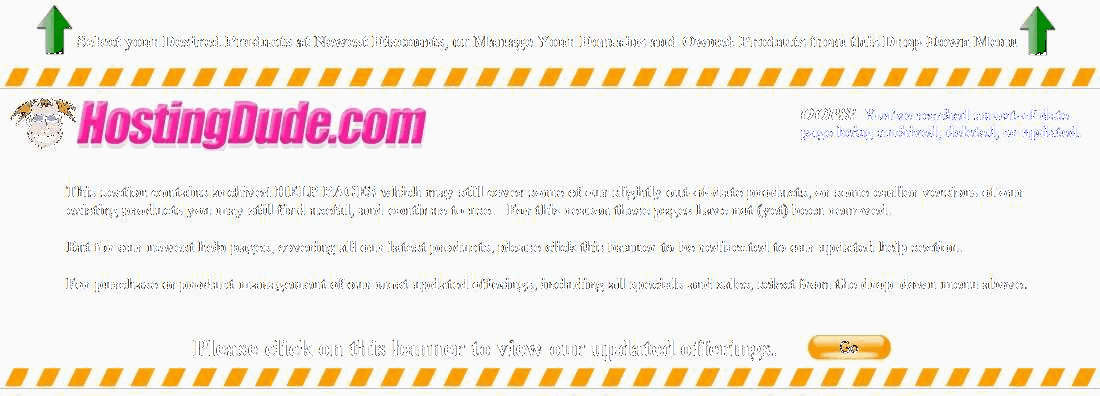Mapping Your Domain Name to Work with a TypePad Blog
You can establish a more professional identity for your TypePad blog by configuring it to point to one of the domain names you registered through us. Instead of entering your TypePad URL to view your latest blog post, visitors enter your domain name's URL. For example, by mapping your coolexample.typepad.com blog to your www.coolexample.com domain name, visitors focus solely on your domain name.
NOTE: TypePad may limit domain name mapping access to those who maintain a specific account level.
To point your TypePad blog to your domain name, you set up domain name mapping, which configures your blog settings and domain name. You update your settings in your TypePad account and Domain Manager, as follows:
- Configure your TypePad account to initiate the domain name mapping process.
- In the Domain Manager, park the domain name you want to use with your TypePad account on our parking nameservers.
- In the Zone File Editor, edit the www CNAME record for the domain name you want to use with your TypePad account. This update tells the Web browser to open your TypePad blog when visitors enter your domain name's URL in the browser address bar.
- Activate your domain name in your TypePad account.
- Forward your domain name to use www. This step ensures your TypePad blog displays for visitors who go to your domain name with or without the www prefix. For example, it displays for visitors who entered both www.coolexample.com and coolexample.com.
Configuring Your TypePad Account
- Log in to your TypePad account, and then open the Control Panel.
- Go to the Site Access tab.
- Click Domain Mapping.
- Click Begin Here: Map a Domain Name.
- In the Enter your custom domain name field, enter the domain name you want to use with your TypePad account, including the www prefix, or enter a subdomain.
- Select the TypePad blog or album to be mapped to the domain name.
- Click Add Domain Mapping.
Parking Your Domain Name
- Log in to your Account Manager.
- Next to Domains, click Launch.
- Select the domain name you want to use with your TypePad account, and then from the Nameservers menu, select Set Nameservers. The Nameserver Settings window displays.
- Select Standard.
- Click Save.
Editing Your CNAME Record
- Log in to your Account Manager.
- Next to Domains, click Launch.
- From the DNS menu, select DNS Manager. The DNS Dashboard displays.
- For the domain name you want to use for your TypePad blog, click Edit Zone. The Zone File Editor displays.
- In the CNAME (Alias) section, click the www record.
- In the Points To field, enter your TypePad account address. For example, enter coolexample.typepad.com.
- Click Save Zone File, and then click OK.
NOTE: You cannot activate your TypePad account to work with these changes until the CNAME records resolve, which takes up to 48 hours.
Activating Your Domain Name Mapping with TypePad
- Log in to your TypePad account, and then open the Control Panel.
- From the Site Access tab, click Domain Mapping.
- Click Activate.
Forwarding Your Domain Name
- Log in to your Account Manager.
- Next to Domains, click Launch.
- Select the domain name you want to forward to your TypePad blog.
- From the Forward list, select Forward Domain.
- Select http:// or https:// depending on your server settings. For more information on HTTP and HTTPS, see HTTP vs. HTTPS.
- In the Forward to field, enter the complete URL where your domain name should be forwarded. For example, enter www.coolexample.com.
- To automatically update your nameservers to accommodate your forwarding
changes, select Update my
DNS setting to support this change.NOTE: Activating this setting will update your domain name's nameservers and IP address. If you are currently hosting a website for this domain name, the website will no longer be accessible using this domain name once you save the changes and they propagate.
- To view additional options, click Advanced Options, and select one of the following:
- Forward Only — Specifies the length of time for this forwarding setting. Select one of the following Redirect types:
- I am permanently forwarding my domain — Redirects to the site you specified in the Forward To field using a "301 Moved Permanently" HTTP response. The HTTP 301 response code tells user-agents (including search engines) that the location has permanently moved.
- I am only temporarily forwarding my domain — Redirects to the site you specified in the Forward To field using a "302 Found" HTTP response. The HTTP 302 response code tells user-agents (including search engines) that the location has temporarily moved.
- Forward with Masking — Prevents the forwarded domain name's URL from displaying in the browser's address bar, and lets you specify Meta Tags for search engine crawlers by completing the following fields:
- Title — Displays at the top of the browser window and in search results
- Description — A short description of your website to display in search engine results
- Keywords — A list of comma-separated keywords that describes the content and purpose of your website
- Forward Only — Specifies the length of time for this forwarding setting. Select one of the following Redirect types:
- Click OK.
NOTE: As a courtesy, we provide information about how to use certain third-party products, but we do not endorse or directly support third-party products and we are not responsible for the functions or reliability of such products. We are not affiliated with, endorsed, or sponsored by TypePad.





